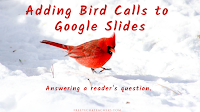Science Lesson – The Threat of Invasive Species
When you drive into my home state of Maine two of the first signs you’ll notice are a sign to watch for moose and a sign banning the importation of firewood. The reason for the moose crossing sign is fairly self-explanatory. The reason for the ban on importing firewood may not be so obvious. Importing firewood is banned because we are trying to prevent the introduction of invasive insects. The part of the explanation of why we’re concerned about invasive insects can be found in a TED-Ed lesson titled
The Threat of Invasive Species.
The Threat of Invasive Species is a TED-Ed lesson that explains the problems caused when plants and animals are introduced to non-native habitats. The lesson explains how plants and animals get introduced to new environments, what happens when they are introduced to those environments, and what some governments do to try to control invasive species.
TED-Ed lessons include a small selection of multiple choice and short answer questions. You can use the TED-Ed platform and questions as they are written or you could use another platform to develop your own flipped lesson. The following three tools make it easy to develop your own flipped lesson or simply have students record and share notes with you while watching the video lesson.
this video I provide a complete overview of how to use
EDpuzzle to create video lessons using videos that you find online.
Live Discussions builds upon Pause Prompts by incorporating an online response element for your students. When a Pause Prompt is reached you can have your students respond online as well as by speaking in class. Live Discussions generates a link and QR code for students to follow to land on a response page where they can answer the questions in the Pause Prompts. You’ll be able to see their responses in your ClassHook teacher account. Watch this video to see Pause Prompts in action.




